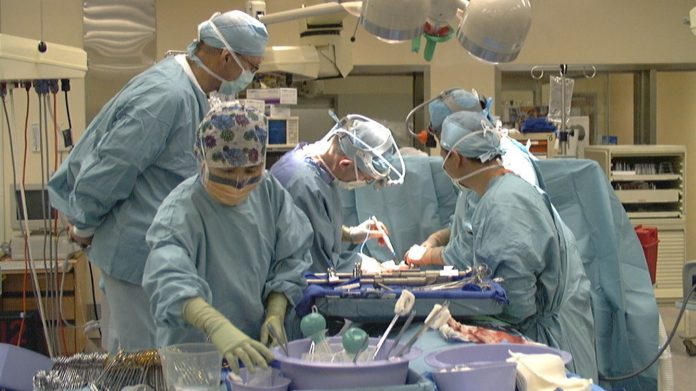Neurosurgeons work exhausting hours filled with consultations, emergencies, and operations — all demanding peak performance. More sophisticated imaging and automation would make pre-operative planning faster and more detailed, freeing up time and improving patient outcomes.
Tech start-ups are coming up with creative ways to make life easier for many professions, and Canada’s Synaptive Medical is targeting neurosurgery. Existing technologies are not up to scratch for neurosurgeons; in particular, more sophisticated imaging is needed to make operations as minimally invasive as possible to increase the chances of success.
Minimally invasive brain surgeries involve smaller, more precise openings that minimize collateral damage to the surrounding tissue. This approach also significantly lowers blood loss and makes recovery faster for the patient. In the context of cancer, these surgeries provide the most efficient way to access and remove tumours.
“It’s a stealth approach,” explained neurosurgeon Kaisorn Chaichana to Mayo Clinic. “You go deep within the brain, you cause minimal disturbance — it’s like no one knew you were there.”
Synaptive’s tech has been called the “Google Maps of brain surgery”. Their flagship offering, BrightMatter, helps surgeons to plan the safest, most efficient route through a patient’s brain while delivering advanced visualization throughout the operation.
Automatic brain mapping and a robotic surgical assistant
Tractography is the process of using MRI to visualizing a patient’s nerve tracts in 3D. Every patient’s brain anatomy consists of unique patterns of white matter, which indicate important areas that control functionality. White matter is found in the deeper tissues of the brain and plays a leading role in facilitating information transfer among neural networks. Avoiding damage to this tissue is therefore critical, but the target tumour may be in contact with it, posing a risk during surgical resection.
Generating a tractogram of white matter patterns is typically a time-consuming and complicated process for surgeons, so it’s not always possible to have this useful patient-specific information handy in time for the operation.
Synaptive’s solution is through software (Brightmatter AutoSeg) that automatically generates a dynamic whole-brain tractogram and further segments the tracts into patient-specific bundles. Automated segmentation could make a huge difference to surgical planning and decision-making mid-operation, ultimately delivering superior patient outcomes.
“In instances of brain cancer, tumour growth may distort patients’ white matter tracts, which may complicate planning a safe route of entry to the brain,” explained Cameron Piron, President of Synaptive, in a press release.
“Having easy access to quickly generated tractography before tumour resection procedures may be life-saving for patients. [AutoSeg]… further demonstrates our dedication to delivering tools that assist neurosurgeons in providing optimal care for patients undergoing surgical procedures,” he added.
Another key innovation from Synaptive is the Modus V, a robotically-controlled digital microscope that acts as the perfect assistant in the operating room. The unit moves dynamically according to the movements of the surgeons and allows them to see way down into tiny openings — a crucial feature for performing minimally invasive brain and spine surgeries.
Modus V is also voice-controlled, so if a surgeon needs it to hold its gaze on something or remember a landmark, they can use their voice to tell it to do so. Not having to touch any controls means that their hands stay clean during the procedure. The unit provides surgeons with an uncompromised view and doesn’t disrupt workflow or the way they position themselves while operating.
Expansion and Ontario’s entrepreneurial ecosystem
In October 2020, Synaptive secured a $17 million investment from Sensegain Group, a prominent asset management firm from China. The partnership will launch their efforts to crack the Chinese market and expand the availability of their products.
Piron has commented favourably on Ontario’s strong entrepreneurial ecosystem which helped foster the company’s early growth: “There are great programs that support companies in their growth… for example, MaRS (Discovery District) didn’t exist when we founded our first company, but as soon as it opened its doors, it offered a home for budding start-ups like Synaptive.
“It was where we strengthened our base, expanded our operations, and now here we are moving out of its premises as a full-fledged medium-size organization.”








































